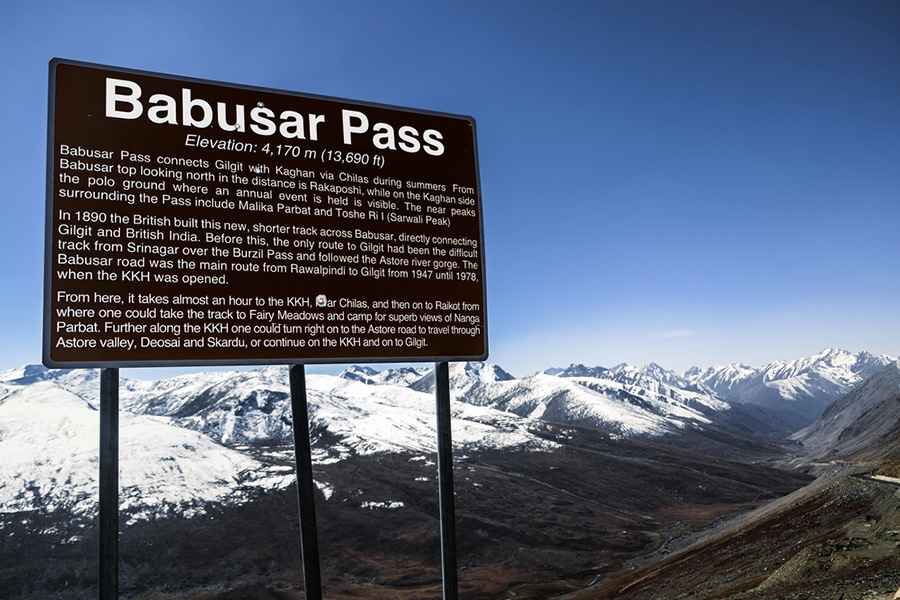Babusar Pass Road: Pakistan’s Own “Death Road” Through the Himalayas
Tucked away in the towering heights of the Himalayas, Babusar Pass Road (N-15) is one of Pakistan’s most dramatic and dangerous mountain routes. Stretching over 150 kilometers (93 miles), this winding highway connects Mansehra District in Khyber Pakhtunkhwa to Chilas in Gilgit-Baltistan, snaking through the Kaghan Valley before culminating at the Babusar Top—at a staggering 4,173 meters (13,691 feet) above sea level.

This road isn’t just a feat of engineering; it’s a test of courage, nerve, and raw driving skill.
How long is Babusar Pass Road?
The route runs from Balakot to Chilas, forming a northern bypass to the Karakoram Highway. It cuts directly through steep valleys, rocky terrain, and rolling alpine meadows, making it both a scenic and perilous journey. The stretch between Naran and Babusar Top is particularly notorious—narrow, unguarded, and constantly threatened by landslides, rockfalls, and snow.
The road is typically open only from June to early October due to heavy snow in the region during the rest of the year. Even during the open season, weather changes can be sudden and severe.
Is Babusar Pass Road dangerous?
Absolutely. While it might not carry the same international infamy as Bolivia's Death Road, Babusar Pass Road is just as treacherous, especially during the monsoon season or when snow lingers past its usual retreat.
- No guardrails, especially on the upper sections.
- Vertical drops of hundreds of meters along cliffside edges.
- One-lane width in several areas, especially near the summit.
- Unpredictable weather: fog, snow flurries, and cloudbursts are common.
- Frequent landslides due to soft soil and loose rock formations.
In 2019, a tragic accident occurred when a passenger bus fell into a ravine near Babusar Pass, killing at least 26 people and injuring dozens more. Many similar incidents have occurred over the years, and roadside memorials dot the route—grim reminders of how unforgiving this road can be.
Why is Babusar Pass Road so dangerous?
The road’s extreme elevation means oxygen levels are lower, which can impair a driver’s alertness. Combine that with steep, winding curves and narrow lanes barely wide enough for one vehicle, and you have the recipe for a high-risk passage.
Adding to the danger:
- Glacial meltwater frequently washes over the road, making the surface slippery.
- Local drivers often travel at unsafe speeds, especially on downhill segments.
- Sharp blind corners make overtaking extremely hazardous.
Perhaps the most chilling part? No barriers or guardrails separate you from 1,000+ foot drops in several locations. One wrong turn could be fatal.
How do people drive on Babusar Road?
Locals are accustomed to the terrain and typically drive with caution. But tourists and thrill-seekers often overestimate their capabilities. As with Bolivia’s Death Road, motorcyclists and adventurers are increasingly drawn to Babusar for the adrenaline rush.
Here are a few golden rules for navigating Babusar Pass:
- Use a 4x4 vehicle with good brakes.
- Avoid traveling after 4 PM, as fog and darkness roll in quickly.
- Never overtake on a bend—visibility is minimal.
- Carry warm clothes and water, even in summer. Conditions change rapidly.
- Don’t drive if you feel altitude sickness. Headaches and nausea are common at these heights.
To capture the surreal, otherworldly landscapes along the way, many travelers shoot video content to document the journey. If you're editing your travel footage and need to clean up your visuals, tools like Adobe Express’s video background remover can help you remove distracting backdrops and make your shots more cinematic.
Can you still drive on Babusar Pass Road?
Yes, and it’s still a vital part of Pakistan’s road network, especially for travelers and commercial vehicles connecting the northern areas. Unlike Bolivia's Death Road, Babusar hasn't been bypassed—there is no alternative route that offers the same direct access.
However, during winter months, the road is completely closed due to heavy snow. Authorities reopen it only after a thorough safety inspection each year, usually in late May or early June.
What makes Babusar Pass unique?
Besides the danger, the beauty of Babusar Pass Road is unmatched. Alpine meadows, glacial streams, waterfalls, and snow-capped peaks flank the route. From the summit at Babusar Top, you can see Nanga Parbat—the ninth-highest mountain in the world—on a clear day.
For photographers, motorcyclists, and off-road enthusiasts, this road offers the adventure of a lifetime. But for the unprepared or overconfident, it can be the last road you ever take.
A chilling nickname?
While Babusar Pass Road doesn’t have an official nickname like “Death Road,” it is often referred to by locals as “Qatil Sarak” (The Killer Road) due to the frequency of deadly accidents and its unforgiving nature.
Final Thoughts
If Bolivia has the Death Road, then Pakistan has Babusar Pass. It’s a raw, thrilling, and often dangerous journey through the heart of some of the most dramatic mountain terrain on Earth. Whether you go for the views, the challenge, or the sheer adrenaline, remember this:
Respect the road, or it won’t respect you.
Image credit: Depositphotos